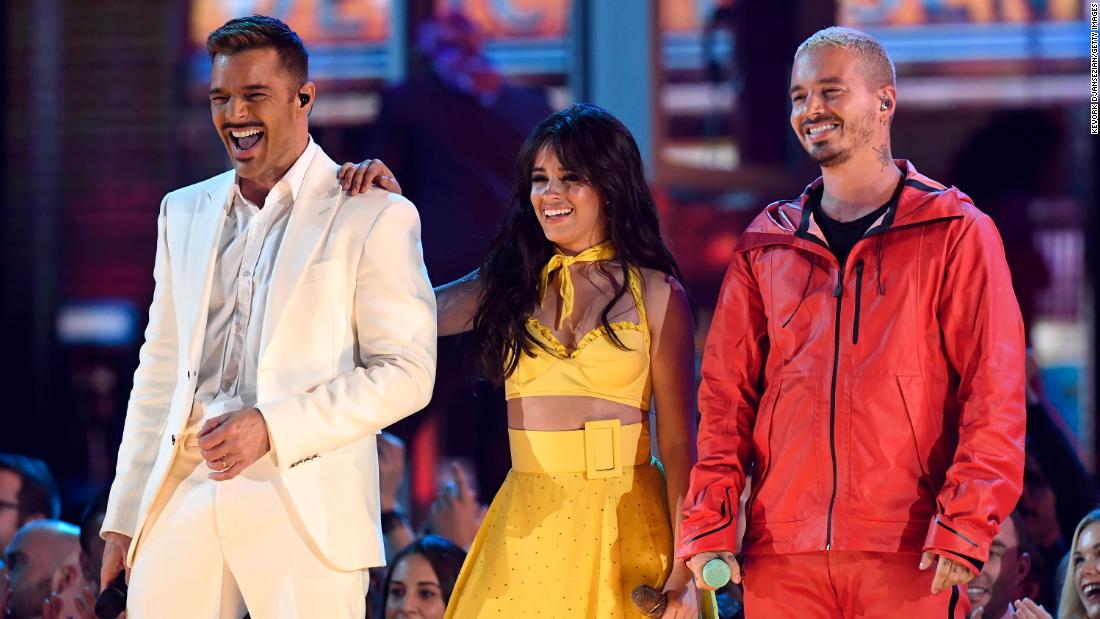Latin artists once had to cross over to achieve global success. Now listeners are crossing over to them
“You go to Jimmy Fallon, Jimmy Kimmel, and every week almost there’s a Latin artist performing in Spanish. And it’s perfectly normalized,” says Leila Cobo, author of “Decoding ‘Despacito’: An Oral History of Latin Music.”
“That just is an example of how popular the music has gotten and the fact that now it’s regarded as mainstream pop not just niche music.”
Latin artists have been crossing over for decades
Perhaps the first Latin artist to “cross over” was Dámaso Pérez Prado in the 1950s, says Cobo.
“They discovered this guy whose music was very popular around the world and in the States, and they said, ‘Well, why don’t we treat him as if he were an American artist instead of treating him as if he were a Latin American artist only for Latin America?” Cobo says.
“Coming from Latin America and singing in Spanish was still a little bit strange and not common for the mainstream, even though it was happening everywhere,” she adds.
The ’90s turned the crossover into a movement
Executives at the label Sony Music Entertainment, which signed Martin to its Latin music division in the early ’90s, were already looking at ways that they might market Martin to an English-speaking audience, Cobo says.
“Here was a guy that was playing stadiums in Latin America,” Cobo says. “If you [were a label executive and you] went to a Ricky concert in Argentina and you saw 50,000 people, you wanted to see what you could do with the guy elsewhere.”
But before that moment at the Grammys, most Americans had no idea who he was.
“Right in the crux of 1999, 2000, it was a very unusual time where you had five extraordinary artists coming out at the same time, which is not common,” Cobo says. “There was a bit of accident, a bit of planning … All the pieces came together.”
Then streaming changed the game
But the phenomenon was short-lived, as critics later documented. And after a few years, the so-called “Latin Explosion” that promised to transform the US pop market — as well as the US itself — imploded.
After that period, Latin music fell into a slump, according to Cobo.
While some Latin pop hits such as Daddy Yankee’s “Gasolina” broke into the US mainstream, the Latin music industry took a downward turn as music went digital, she says. Piracy was rampant in Latin America, she explains, causing major labels to lose money and invest less in artist development.
We’re living in the reverse crossover era
The success of “Despacito” kickstarted a new wave of mainstream success for Latin music — one that shows no signs of slowing down.
Since “Despacito,” other predominately Spanish-language tracks have performed well on the charts, too — from J Balvin’s “Mi Gente” to Rosalía’s “Malamente” to the No. 1 hit “I Like It” from J Balvin, Cardi B and Bad Bunny.
Despite finding major success outside of Latin America, artists such as J Balvin and Bad Bunny have recorded few songs in English and have indicated that they feel no compulsion to do otherwise.
Others, like Cobo, are more hopeful. The landscape, she says, is much more fluid in today’s era — crossover not required. Some Latin artists switch seamlessly between collaborations with other Latin artists and US pop artists and between bilingual songs and exclusively Spanish-language tracks. Others choose to record mostly in Spanish because it feels authentic to them — knowing that despite their decision, or perhaps because of it, they have legions of fans behind them.
For all the latest entertainment News Click Here

